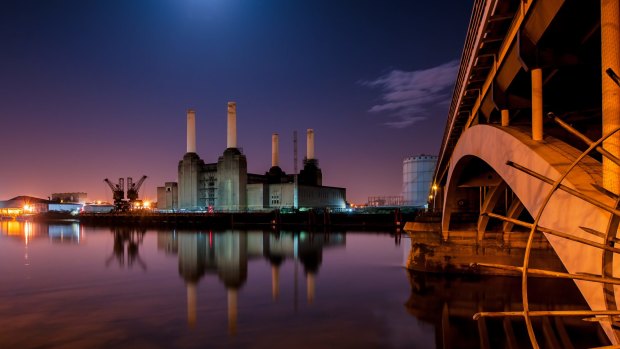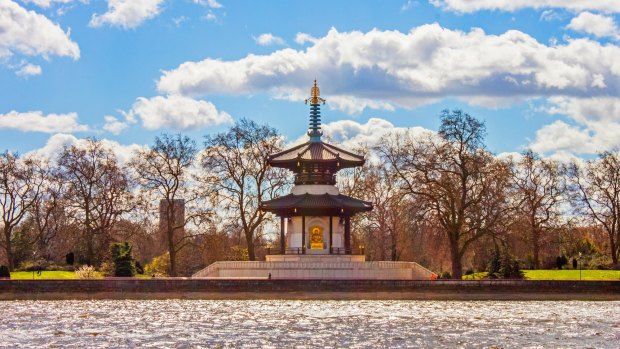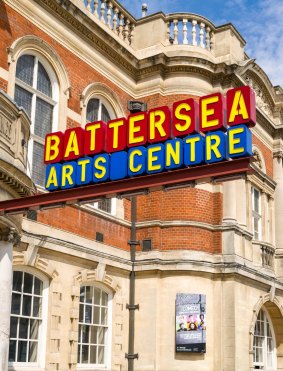By Steve Meacham

Looking across the River Thames from Chelsea to Battersea Power Station.Credit: Getty Images
On a brisk winter's morning I'm jogging in one of London's most beautiful parks. The route takes me along the Thames, past the city's only peace pagoda, and around the boating lake that, in summer, will be crammed with boats.
Almost 70 years ago, in the summer of 1951, Battersea Park was one of the sites of the Festival of Britain. Held to commemorate the centenary of Prince Albert's Great Exhibition of 1851, this was the first national "let your hair down" party in the UK since the end of World War II. Activities were held all around the country, but the park hosted what Britons remember most clearly: the Festival Pleasure Gardens, remnants of which are still preserved.
Across the Thames lies the Royal Borough of Kensington and Chelsea, and the walk from Battersea to Chelsea, via either Chelsea Bridge (1937) or Battersea Bridge (1890), takes about five minutes. But for centuries Battersea has been known as "the poor man's Chelsea".

The peace pagoda in Battersea Park.Credit: Alamy
On the unfashionable South Bank, Battersea was heavily bombed during the Blitz and was blighted by what many Londoners regarded as one of the city's biggest architectural eyesores, Battersea Power Station, which opened in 1933 and was not only used as a navigational aid by the Luftwaffe but also heavily targeted.
But history has a way of rearranging the victors and today, Battersea Power Station is a heritage-listed building hallowed as a "brick cathedral".
The exterior was designed by Giles Gilbert Scott, best known for his classic red telephone box, and features a wondrous but rarely seen art deco interior. The landmark has also featured in many films, including Alfred Hitchcock's Sabotage, the Beatles' Help! and Monty Python's The Meaning of Life, not to mention on the cover of Pink Floyd's 1977 album, Animals.

The Battersea Arts Centre.Credit: Alamy
Since 1983, when the power station was decommissioned, various ideas have been suggested for the building. Apart from demolition, options included a theme park, shopping mall, a new stadium for Chelsea FC and the base for a gigantic "ecotower" described by then London mayor Boris Johnson as "an inverted toilet-roll holder".
In 2018, London's Evening Standard newspaper reported that the building had been sold for £1.6 billion and already parts of the massive redevelopment that surround it are open, with the powerhouse itself to be unveiled in the middle of next year.
When finished, it will house not only the 1400 men and women staffing Apple's new London HQ but an events space, a food hall, shopping mall and 253 apartments, including some of the most expensive in the world. Forgive the pun, but Scott's much-criticised creation has helped power the reinvention of Battersea. Should you be looking for a relatively inexpensive part of London to base yourself, Battersea is well worth considering. Apart from the park and the Thames, its public transport connections to London's major sights rival Chelsea's, while it boasts plenty of attractions of its own.
These include:
THE PEACE PAGODA London's Buddhist stupa was built under the guidance of a Japanese monk, Nichidatsu Fujii. Built by monks and nuns and completed in 1985, it was one of many peace pagodas instigated by Fujii after the atomic bombs fell on Hiroshima and Nagasaki in 1945. Fujii died, aged 99, just weeks before construction finished.
THE PUMP HOUSE GALLERY In the heart of Battersea Park, the gallery celebrated its 20th anniversary in 2019. Originally designed to pump water around the park, it now hosts contemporary art exhibitions.
BATTERSEA DOGS & CATS HOME Renamed in 2002, this is probably Battersea's most globally recognisable claim to fame after the power station. Camilla, Duchess of Cornwall, is current royal patron of an institution founded by Mary Tealby in 1860.
BATTERSEA ARTS CENTRE Want to see live entertainment but can't face the bustle of the West End? This Victorian-era former town hall, described by Time Out magazine as "South London's erratic temple of the avant garde", hosts a variety of shows – including stand-up comedy, theatre and live music – on one of the largest stages on the South Bank.
This article appears in Sunday Life magazine within the Sun-Herald and the Sunday Age on sale February 16.
Sign up for the Traveller Deals newsletter
Get exclusive travel deals delivered straight to your inbox. Sign up now.